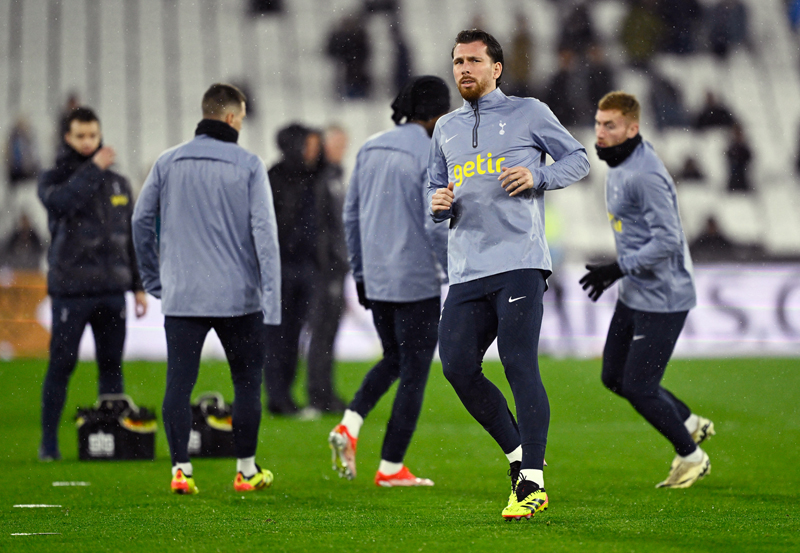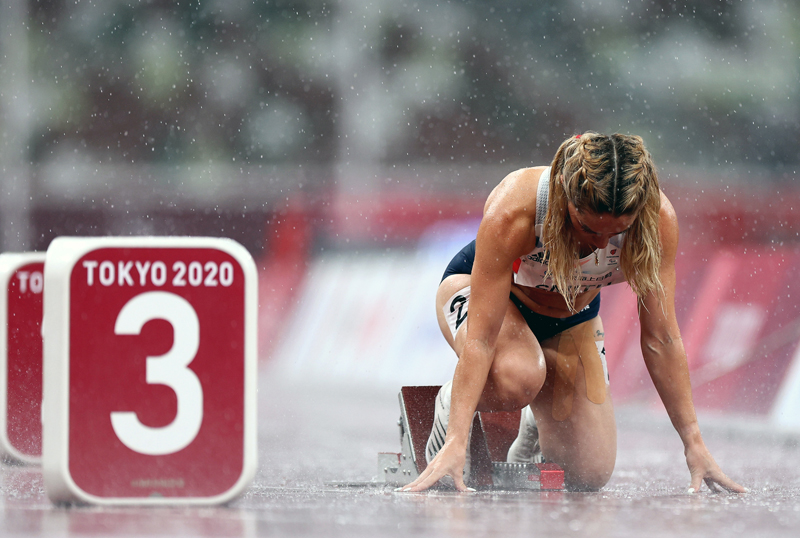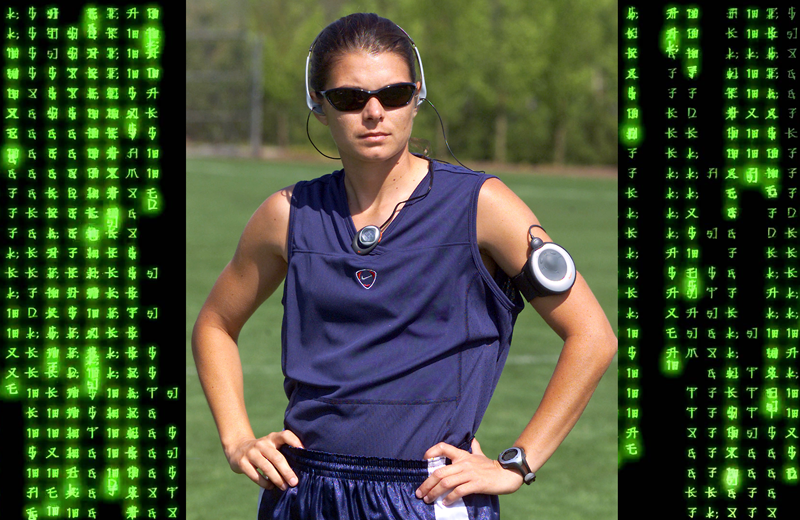When a team or individual has ‘momentum’, the most unlikely of reversals appears possible. However, momentum is one of the most overused terms to explain success or failure in sport despite being rather poorly understood (1). The purpose of this article is to discuss the concept of psychological momentum and examine the evidence for its existence.
Understanding momentum
Momentum is considered a cornerstone of physics and has been defined as the ability of an object to continue moving because of its mass and velocity (2). Now think of a snowball rolling down a mountain side – what starts as a small, slow moving object, can easily become a forceful fast moving large object that could do some real damage to anything in its way.In sport, psychological momentum has been defined as ‘a bi-directional concept, affecting either the probability of winning or the probability of losing as a function of the outcome of the preceding event’ (3). Psychological momentum has also been defined in relation to perceptions of moving towards a goal (4). It is important to note that psychological momentum can be either positive (where almost everything seems to go right) or negative (where nearly everything seems to go wrong). In a rowing regatta, a crew that has erased a four length deficit would likely be experiencing positive momentum, while the crew that has lost the lead would be experiencing negative momentum.
Although research has been rather intermittent, sport psychologists have spent nearly three decades examining both perceptions of psychological momentum and links to performance and outcomes. Overall, the concept appears to divide opinion, with some researchers dismissing the phenomena as a mere performance label (5) or cognitive illusion that is nothing more than the expected ups and downs that occur in sport (6). Indeed, when statistically examined by computing shooting records or evaluation of individual performance trials in basketball, there doesn’t seem to be any hard evidence of a ‘hot hand’ or ‘hot streaks’ (6, 7). In fact, one study showed a slight trend suggesting a successful shot was more likely after a previous failure (7). However, such objective approaches do not really fit with the concept of momentum as a subjective experience because they fail to examine the perceptions or thoughts of participants.
The concept of momentum appears ingrained in sporting culture and research evidence clearly shows that athletes’ perceptions of momentum do exist, and shift in response to gaining or losing ground in competition (1). Momentum sequences can be very brief or even roll over from one match to the next. There is also evidence to suggest that changing perceptions of momentum are linked to changes in athletes’ thoughts and feelings, which could influence performance (8). However, it should be noted that very few studies have found hard evidence to link changes in perceptions of psychological momentum with changes in performance and outcomes.
Models of momentum
In attempting to describe and explain how momentum influences individuals, sport psychologists have proposed a number of alternative models. The antecedents-consequences model suggested that the extent to which psychological momentum influences performance is dependent on personal (eg motivation, anxiety levels) and situational factors (eg crowd behaviour and task difficulty)(4). Furthermore, it was suggested that experiencing psychological momentum was likely to lead to increased arousal, benefiting tasks requiring higher levels of arousal. The antecedents-consequences model also suggested perceptions of control were an important feature. However, this model did not fully consider the role of emotions or arousal on momentum.Perhaps the most significant advance in understanding psychological momentum came with the multidimensional model of momentum in sports (9). This model comprises a number of critical elements that determine the development of momentum (see figure 1). These elements form a ‘momentum chain’, which has allowed researchers to test the predictions of the model.
First, a precipitating event or ‘momentum starter’ is perceived and interpreted by the individual, causing changes in cognitive (ie self-efficacy, motivation), affective (ie positive or negative feelings) and physiological (ie arousal) factors. Such intrapersonal changes are then predicted to influence behaviour such as activity level, pace etc and as a consequence, changes in performance and immediate outcome are expected.
There are two other important elements to the model: namely experience and opponent factors. Previous experiences are proposed to influence how precipitating events are perceived. For example, it is suggested that experienced athletes are better able to initiate, maintain and interrupt momentum sequences due to their accumulated sports-related knowledge. Finally, in head-to-head contests, the model considers the role of opponent factors in sport. The theory is that the extent to which performance and outcome variables are influenced is not only down to the degree to which a player or team experiences positive momentum, but whether the opponent experiences negative momentum as a result of a precipitating event or series of events.
Momentum evidence
While it is important to acknowledge that research into psychological momentum has produced mixed results, one supportive study is particularly impressive, especially given the controlled nature of the investigation. A Canadian research team reasoned that previous inconsistent findings were likely due to the use of methods and tasks requiring low arousal that were not conducive to testing the concept (10).These scientists used a 12-minute laboratory-based bogus cycle race to test for perceptions of momentum and performance changes. Participants believed they were racing against an opponent with a similar VO2max to their own, situated in an adjacent room. During the race, 20 participants viewed a computer screen showing which rider had the lead, and the amount of time left. However, the participants were actually viewing a pre-recorded race representing (1) a no-momentum condition where competitors were tied throughout the race, or (2) a momentum condition where the participant fell significantly behind before coming back to tie the race. Participants retrospectively reported perceptions of momentum for four time periods during the race.
Results revealed that participants in the momentum condition reported significant decreases and then increases in perceptions of momentum in response to losing and then regaining the lead. Participants in the no momentum condition reported no significant changes in perceived momentum over the course of the race. Thus perceptions of momentum did change as a result of either losing or gaining ground in the race.
In relation to performance measures, participants in the no-momentum condition did not show any significant variation in performance across the time periods. In contrast, participants in the momentum condition were found to pedal faster when they lost the lead, and generated even greater power output when they regained the lead. The fact that negative momentum actually resulted in increased performance is interesting and went against predictions. However, participants fell behind over a relatively short period of time and quickly made up the ground, with the authors speculating that a loss of momentum over a longer period would likely have resulted in an expected drop in performance. It is possible that falling behind acted as a form of motivation to encourage greater effort.
Another study used a basketball-shooting task to test the predictions of the multidimensional model of momentum(8). Over 100 university students completed the task and reported their perceptions of momentum, self-efficacy, affect and arousal. Furthermore, a measure of persistence was included that related to the participants’ willingness to continue shooting (when scores were deducted for missing).
Results revealed significant differences between positive, negative and neutral momentum groups in relation to self-efficacy and affect. The highest and lowest levels of self-efficacy and affect were found in the positive and negative momentum groups respectively. Despite this, no significant differences were found between momentum groups in relation to arousal or persistence. As such, the evidence offered only partial support to the multidimensional model.
Momentum triggers and outcomes
Despite inconclusive evidence, athletes and coaches appear to be convinced that psychological momentum exists. From an applied perspective, it is important to establish how athletes achieve and maintain positive momentum, and reverse negative momentum. After reviewing the literature on psychological momentum, I (along with my colleague Mark Nesti) suggested that what most previous researchers had failed to do, was talk to the athletes who had experienced momentum and try to understand their perspectives (10).Much past research involved either filling out brief questionnaires or examining archival data on win/loss records or scoring configurations. With this in mind, researchers at Loughborough University followed our recommendation and interviewed five national league university football players (11). The in-depth interviews were tape-recorded and transcribed before the researchers attempted to order the data into meaningful themes. Box 1 (below) shows the reported triggers that initiated positive momentum sequences and the outcomes associated with positive momentum.
In research that relied on spectator interpretations of momentum, triggers have been reported for tennis and basketball (9). For example, a trained observer watched quarter-final and semi-final matches from the 1990 US Open and identified triggers that specifically led to momentum sequences. An average of 30 such events per match were noted with dramatic shots, unforced errors, break of serve and not converting a break point opportunity representing the major triggers. Approximately two thirds of the events were attributable to positive play as opposed to mistakes by opponents. In basketball, the main momentum triggers were found to be dramatic play, a scoring run, an important player leaving the game, and a time out. In this case, 78% of events leading to momentum sequences represented positive play.
Reversing negative momentum
The flipside of this concerns what athletes can do when they are experiencing negative momentum and how this might be reversed. I recently interviewed an elite tennis coach and asked him if there were any tips he gave to his players in dealing with an opponent who hits a ‘hot streak’. The main point he made was that tennis was a problem solving sport and that players need to be proactive and look to change things in order to reverse the momentum (see box 2, above). This coach also suggested that when it comes to maintaining it, the crucial factor was to stay calm and focused on the task at hand.
Similarly, soccer players have often reported making changes in an attempt to reverse negative momentum, including changing tactics, controlling the pace of the game and frustrating the opposition. Clearly though, it’s not just a case of expecting your opponent’s performance to drop off; there’s a need to try something different to upset your opponent’s rhythm and perhaps break their focus. That might require the courage to take calculated risks. It is also vital to remain positive and not to let the opposition see any frustration or negative body language as this can hand them an increased sense of control and can help to maintain their positive momentum sequence. Box 3 below gives some practical tips for maintaining psychological momentum. And remember, if opponents show their frustration or attempt to distract you, remind yourself that this is because you are in control!
References:
1. Athletic Insight 8 (1): 2006
2. BBC English Dictionary, London, UK: Harper Collins 1993
3. J Sport Behavior 18: 167-181 1995
4. J Sport Exerc Psychol 10: 92-108 1988
5. Perceptual and Motor Skills 84: 475-485 1997
6. J Sport Behavior 23: 181-197 2000
7. Cognitive Psychol 17: 295-314 1985
8. J Sport Behavior 23: 349-363 2000
9. J App Sport Psychol 6: 51-70 1994
10. J Sport Exerc Psychol 20: 421-436 1998
11. J App Sport Psychol 20: 57-72 2008









